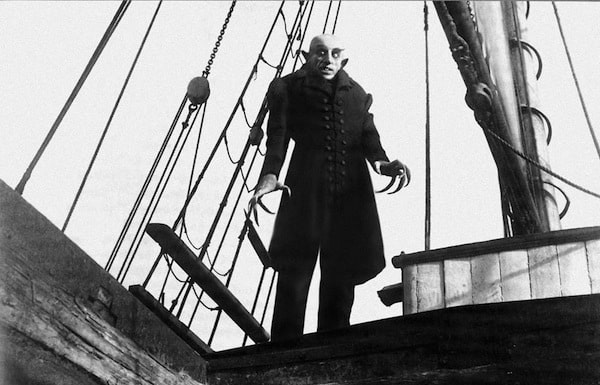
People have had a love affair with all things spooky and perverse for centuries. For as long as there has been language, people have been whispering unsettling fables to make each other’s skin crawl. For as long as there have been doors, people have been jumping out from behind them with the intent to startle. But more interesting than our fascination with terrifying our nearest and dearest friends is our preoccupation with scaring ourselves.
Horror movies have been around since before the turn of the 20th century. In the 1890s, Georges Méliès made several short silent horror films, the most noteworthy being La Manoir du Diable (1886). The three-minute film was an experiment with camera magic in a spooky setting, intended to amuse rather than frighten people. But, honestly, the same could be said about the Saw series.
In 1922, along came Nosferatu, F.W. Murnau’s German film that everyone has heard of but few have seen. In the true spirit of the film industry, nearly every screen vampire since Nosferatu has been a tribute to Max Schreck’s portrayal of Count Orlok (Dracula). Sunlight was never a part of vampire lore — not until the good Count was (spoiler alert!) reduced to a puff of smoke by the morning rays in the end of Murnau’s unauthorized Dracula adaptation.
In the ’30s, the monster movie was king. These were movies that fused adventure with fantastic abominations. Some of them had the unique ability to make the audience feel like the bad guys (see King Kong, the Frankenstein series and, later on, Godzilla). Others were just exploitative attempts to horrify, an aspect of the genre that has held up well over the years (perhaps with a more politically correct methodology). Freaks, a 1932 film about sideshow performers, was the most obvious of this kind of film, casting people with actual deformities rather than actors in order to scare the audience.
After the reign of classic Universal horror films like Dracula and The Mummy, supernatural stories that could be dismissed as impossible when it came time to tuck yourself into bed, audiences were ready for something more unsettling. Thus, the psychological thriller was born.
Directors Stanley Kubrick and Alfred Hitchcock dominated the industry. Their classic tales of murder, violence and insanity are just as disturbing today as they were when originally released.
Hitchcock’s Psycho from 1960 is widely credited for inspiring the slasher-movie onslaught of the ’70s and ’80s. Fortunately for all of us corn syrup fans, this gore storm from 30 years ago produced many iconic horror series that are still cranking out sequels. A Nightmare on Elm Street (1984-2010) is probably older than most university students, and has enjoyed incredible success. Nine full-length feature films, a television show, novels, video games and comic books have all helped to make Freddy Krueger the star of the second-highest-grossing horror franchise, beaten only by the hockey-mask madness of Friday the 13th (1980-2009).
While present-day horror mainly consists of disappointing remakes, mediocre sequels and Japanese rip-offs, there may yet be hope for the horror genre. Our generation has seen the emergence of a new horror sub-genre: found footage.
Movies like The Blair Witch Project, Cloverfield and Paranormal Activity have capitalized on the techno-age, making frightening flicks on low budgets. Advances in science and technology appear to be the inspiration for the small number of unique horror movies in Hollywood. That and gross-out fests like The Human Centipede.
Whether you are a fan of the classic or the cheesy (or both: Trolls 2, anyone?), do yourself a favour and watch a horror leading up to Halloween. And even if you are not a fan of horror movies, it’s at least a good excuse to cuddle up with someone under a pile of blankets.
—
Image: Supplied